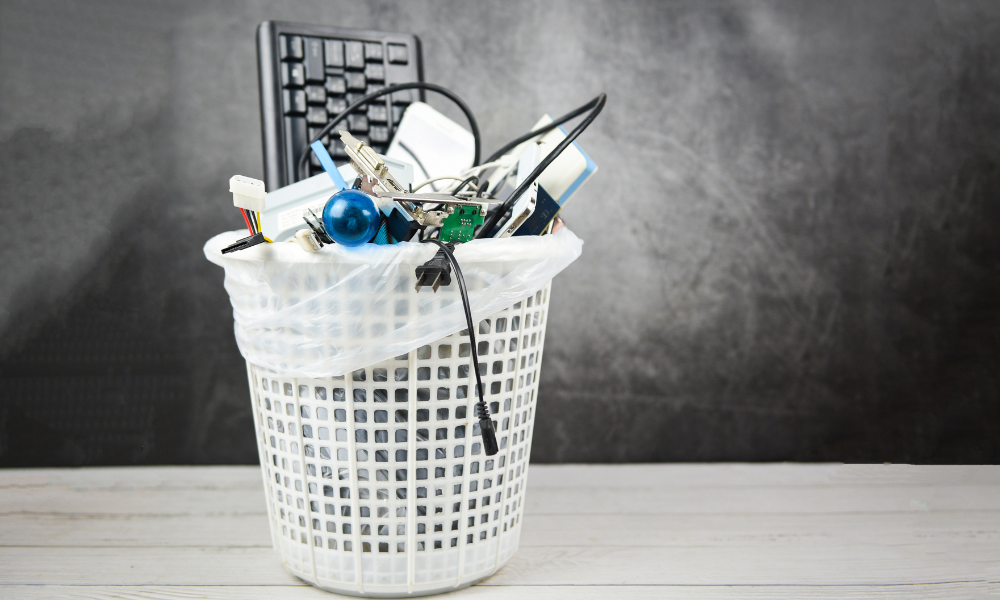One of the biggest contributors to your technology’s impact on the environment is E-waste. But what is it exactly and what can you do about it?
What is E-waste?
E-waste or electronic waste is the general term for waste created by electronic devices, whether this is during production or at the end of the products life. This covers everything from Smart Speakers, laptop chargers and mobile phones up to cookers, fridges, and dishwashers. For this article we are going to focus primarily on the waste created by IT devices, but a lot of the principals remain true for E-waste as a whole.
Why is it a problem?
E-waste is already one of the largest waste streams generating 50 million tonnes of waste per year. This is set to double to 110 million Tonnes by 2050. With IT constantly advancing in line with Moore’s Law (the idea that technology doubles in capacity over 2 years) and technology standards ever changing leaving products redundant, we are consuming our way to ever increasing levels of waste. The impact that humans as a species are having on our world is becoming ever more obvious with more extreme weather events and plastic waste washing up on deserted islands, something must change.
What can we do?
A good place to start looking is at the 5 R’s of recycling and how they link to electronic devices.
Refuse
The first step is to try and find ways to refuse waste. This can be refusing to buy devices that are over packaged, refusing freebies or additional cables that come with devices that you don’t need.
Reduce
Reducing E-Waste is probably one the most important steps that we can take. This is about focusing on making choices when procuring device and changing habits during the device lifetime to avoid producing more waste. Here are a few ideas:
- Going paperless to avoid both extra waste from paper but also ink cartridges
- Buying devices with a higher specification to prolong their usable life
- Ensuring devices are shutdown at the end of a day or a least over a weekend to avoid using more power. Even in a sleep state the devices will draw power.
Reuse
When thinking about reuse we need to ensure that we eliminate single-use products. The biggest culprit of being single use is printer cartridges/toners. Look for options to buy recycled cartridges or return them to be recycled. Also, some printers have ink tanks which allows inks to be sold in recyclable containers rather than traditional cartridges.
Repurpose
With repurposing devices there are 2 ways to look at repurposing. Can it be repurposed internal or externally?
There are cases where devices can be repurposed internally. This could be from a power user that needs a high spec machine to run CAD that after a few years, once the device is no longer suitable for that task that it gets passed on to a standard user who can use it for standard emails and web browsing.
When repurposing externally there are fantastic organisations like DigiLocal who repurpose old devices to give to youth from underprivileged backgrounds who may not otherwise be able to get access to a computer or the internet.
Recycle
Eventually there comes a point where devices are at the end of their useful life. We highly recommend these get recycled. There are lots of rare earth metals used in modern devices that can be reclaimed instead of being mined all over again. Tech devices also contain dangerous chemicals that can leech out into the environment if not disposed of properly. That’s why we suggest you use someone like Byteback who provide secure data disposal and recycling.
Can we help you manage your devices?
A part of what we do for our Managed Services clients is managing their devices, ensuring nothing goes to waste. We even refurbish their existing devices to be reused by new staff members at no additional setup cost.
Get in touch today. Let’s chat about how we can help you make the most out of your technology, while also protecting the environment.

